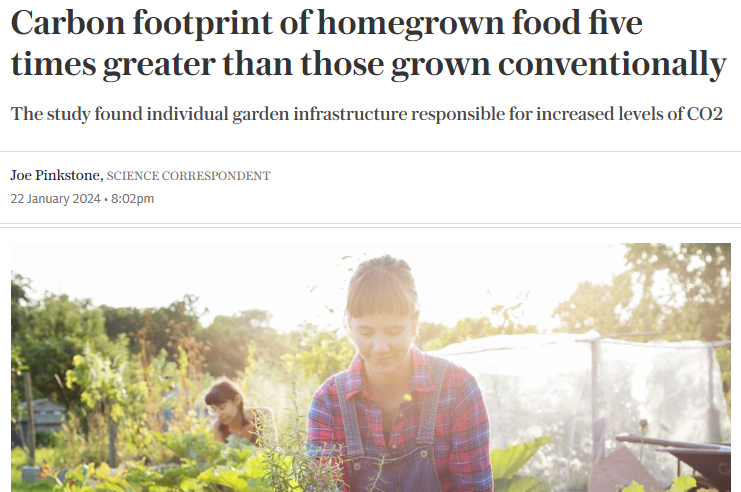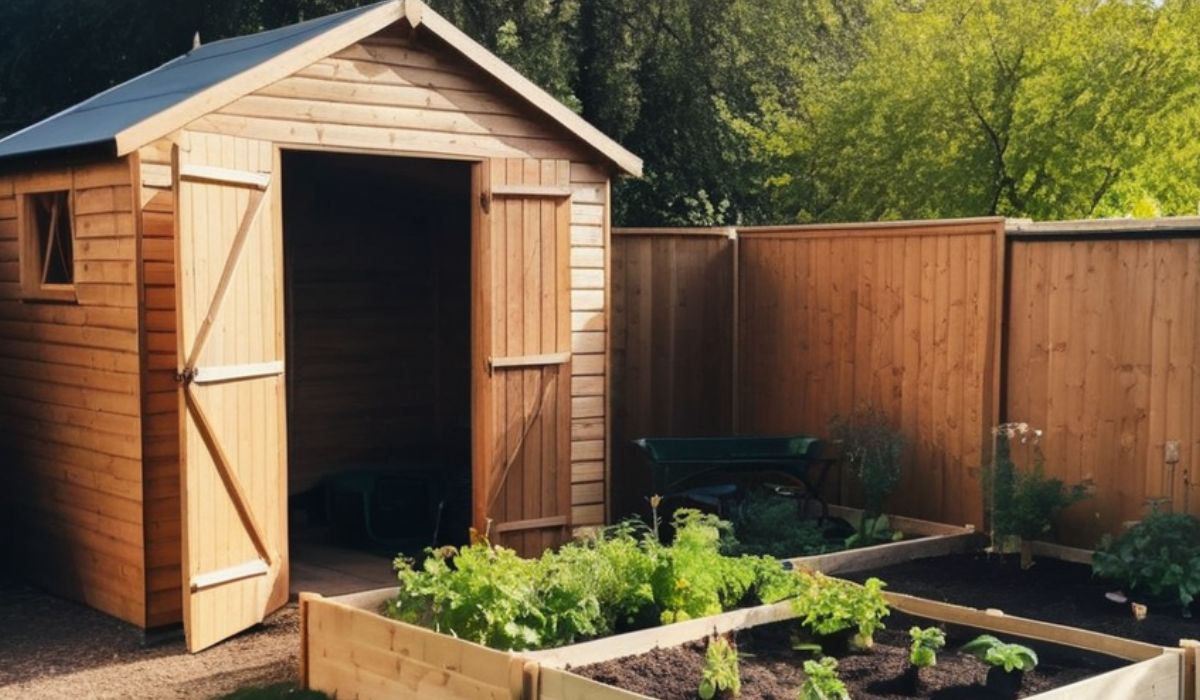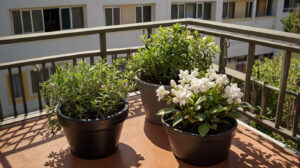
With grocery prices rising faster than incomes, growing your own food is becoming an increasingly attractive option for many people. Not only can a home garden help ease household food budgets, it can also benefit the environment when done sustainably.
A recent article in The Telegraph and echoed in mainstream media alleged that the carbon footprint of homegrown food was five times greater than store-bought equivalents. They cited infrastructure like raised beds, sheds, and pathways as contributing significantly to emissions.
However, this ignores several key factors. A closer look at this study reveals they provide an incomplete picture and overlook the long-term climate benefits of home gardening when the full carbon cycle is considered.
The claims that surfaced this spring stemmed from an analysis conducted in the United Kingdom. It reported that the infrastructure required for an average-sized home food plot, such as raised beds, sheds, and fencing, emitted over five times more carbon than conventional commercial farming operations per kilogram of food produced. But this study had some flaws in its methodology.
First, it attributed the full emissions from structures like garden sheds and fencing only to food production even if these buildings served multiple purposes not related to gardening. Many homeowners already had sheds for lawn equipment or fences for pets before starting vegetable patches. Assigning the full carbon cost of pre-existing buildings solely to food ignores their dual functions.
Second, the analysis failed to account for the role of plants and wood in long-term carbon storage through photosynthesis. Green plants absorb carbon dioxide from the air, fixing the carbon into their leaves, stems, roots and woody biomass. As long as this plant material remains intact, the carbon is kept securely locked away rather than re-entering the atmosphere.

My raised beds, for example, are constructed of wooden boards that will store the carbon captured during the trees’ lifetimes for decades more if properly maintained. Estimates suggest wood can sequester carbon for 50-100 years before fully decomposing. The soil in my vegetable plots is also accumulating organic carbon yearly as plants and compost are broken down by microbes and the carbon molecules get stabilized deeper underground.
Studies show the world’s forests and soils already store over twice as much carbon as exists in the atmosphere. When managed dynamically, these natural carbon sinks have the potential to sequester up to 10% or more of emissions from a given location on annual basis. The carbon trapped long-term in my garden’s living vegetation and soils far outweighs any short-term emissions from constructing the infrastructure.
The Carbon Footprint of Commercial Agriculture
Commercial agriculture is a major player in greenhouse gas emissions. Here’s why:
- Transportation Emissions:
The average piece of produce in the U.S. travels about 1,500 miles from farm to plate. That’s a lot of fuel burned just to get your tomatoes to the grocery store. - Packaging Waste:
Ever notice how much plastic wraps your store-bought veggies? Packaging accounts for 23% of landfill waste in the U.S., and most of it isn’t biodegradable. - Energy-Intensive Practices:
Industrial farming relies on synthetic fertilizers, pesticides, and heavy machinery—all of which require fossil fuels. For example, producing synthetic fertilizers alone contributes to 1.2% of global greenhouse gas emissions. - Land Use and Deforestation:
Large-scale agriculture often leads to deforestation, which destroys carbon-absorbing forests. Think about the Amazon rainforest being cleared for soybean farming—it’s a double whammy for the environment.
The Carbon Footprint of Home Gardens
Now, let’s look at home gardening. While it’s not entirely carbon-free, it’s a far cry from the environmental impact of commercial agriculture.
- Eliminating Food Miles:
When you grow your own food, there’s no need for transportation. A study by the University of Michigan found that home-grown produce can reduce carbon emissions by up to 68% compared to store-bought alternatives. - No Packaging Waste:
Home-grown produce doesn’t come wrapped in plastic. You pick it, wash it, and eat it—simple as that. - Lower Energy Use:
Small-scale gardening uses far less energy than industrial farming. You’re not running heavy machinery or large-scale irrigation systems. - Carbon Sequestration:
Plants absorb carbon dioxide from the atmosphere, and healthy soil acts as a carbon sink. Practices like composting and mulching can enhance soil health, increasing its ability to store carbon.
Some argue that home gardens can have a higher carbon footprint due to resource use or inefficient practices. For example, inexperienced gardeners might overwater or use synthetic fertilizers. But here’s the thing: with a little knowledge and effort, these issues can be easily avoided.
This long-term perspective is critically absent from analyses that view gardening only through its atmospheric greenhouse gas impacts. Researchers increasingly recognize the importance of factoring non-atmospheric carbon cycles into climate impact evaluations to give a truer picture.
My backyard food system serves as a carbon sink rather than a significant source of emissions. In addition to reducing household grocery bills by thousands per year and providing fresh, nutritious produce, it offers a way for people to contribute positively towards sequestering excess carbon from the air by helping sustain local carbon stocks in trees and soils.
🚨🌎 MEP Christine Anderson
— Concerned Citizen (@BGatesIsaPyscho) February 10, 2024
“The EU are frightened”
“People are realising its (Climate change) is a GIGANTIC LIE”
Heroine MEP Mrs Anderson dropping truth bombs. pic.twitter.com/NHxTH9rOwY
As extreme weather and supply chain disruptions threaten global food security, programs should support more communities strengthening resilience through home gardening. Small suburban plots, when designed with sustainability in mind using perennial plants, composting and minimal tilling can have minimal environmental footprint while reconnecting people with nature and empowering self-sufficiency.
The Bottom Line: Home gardens are generally more sustainable than store-bought produce, especially when managed with eco-friendly practices.







